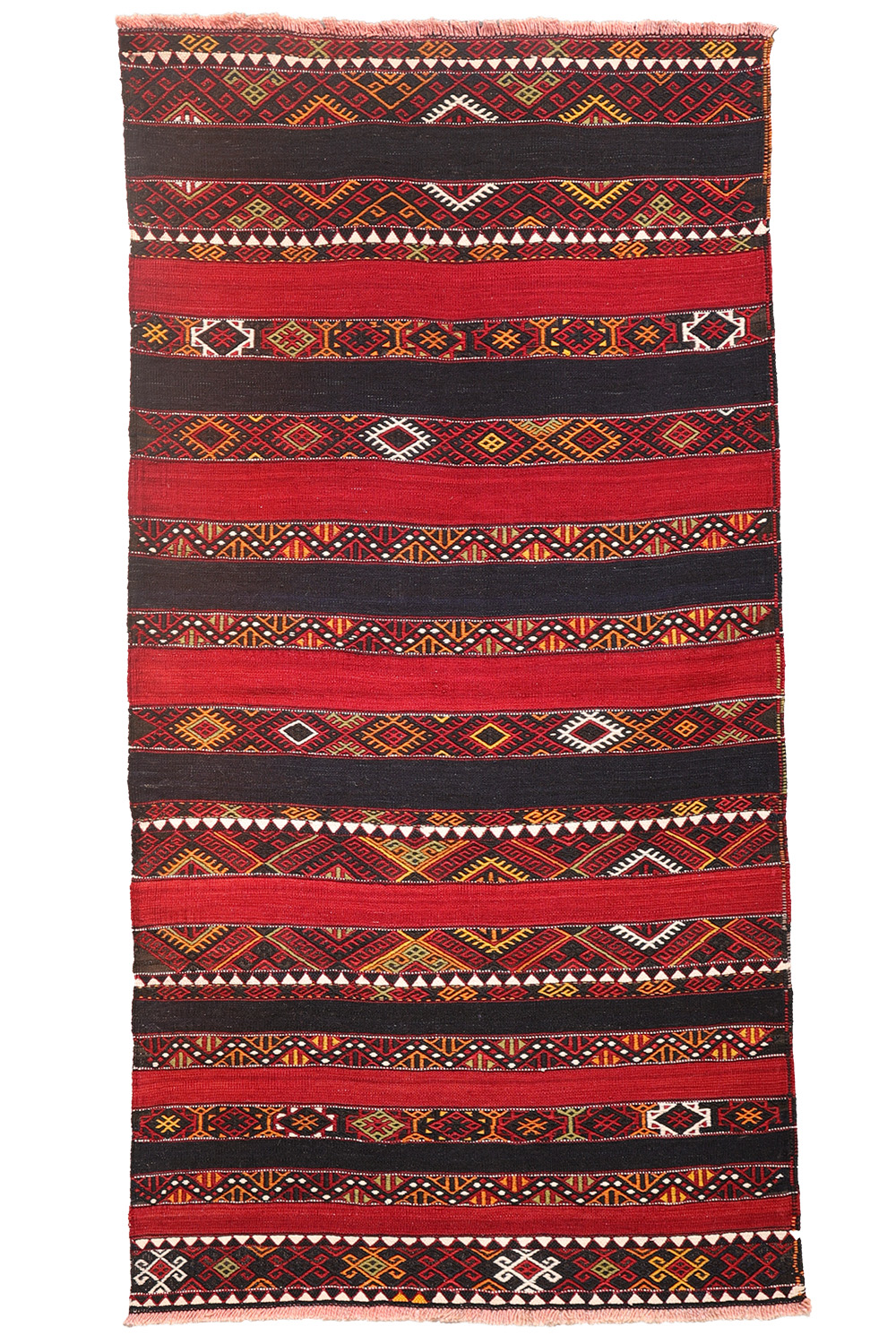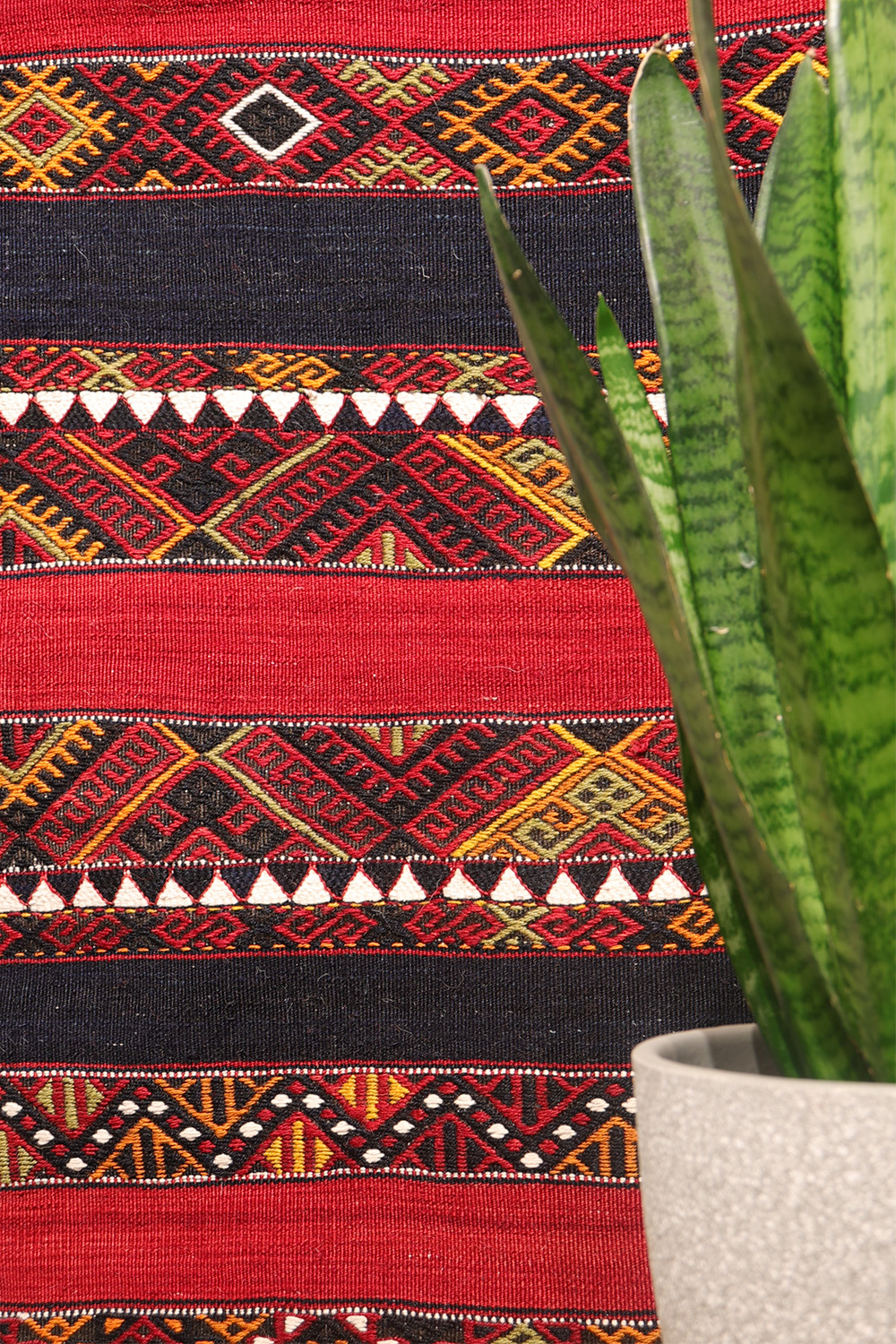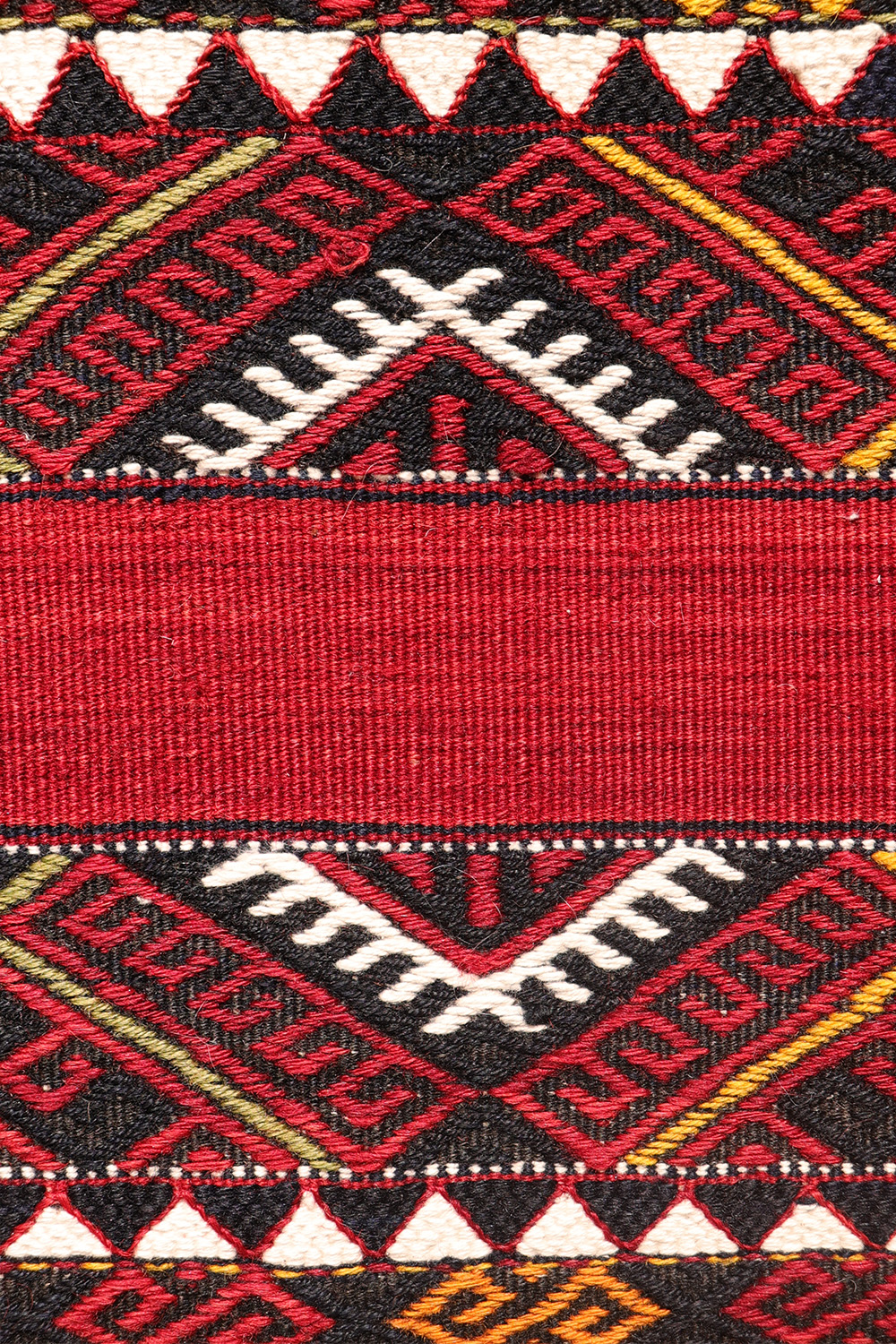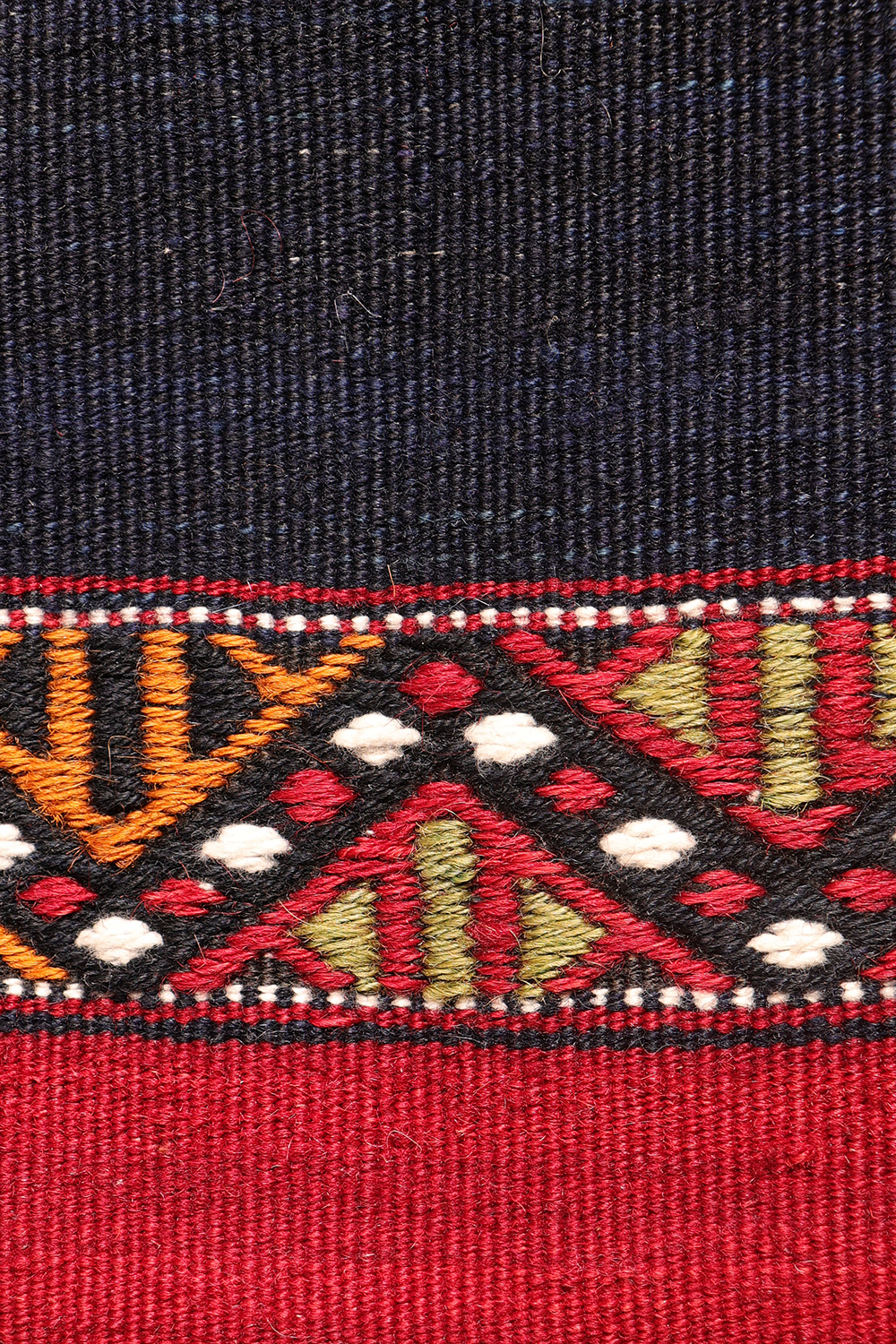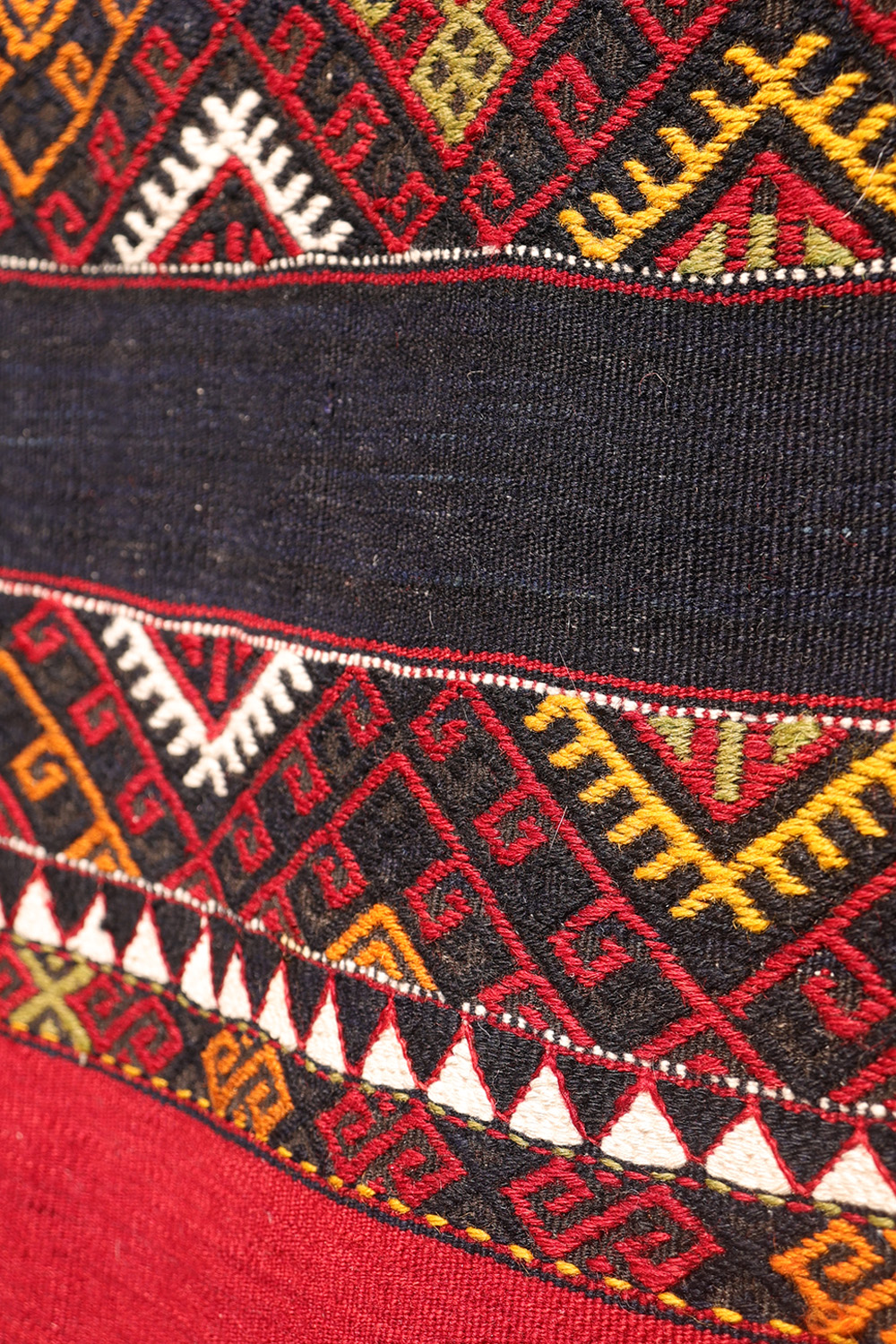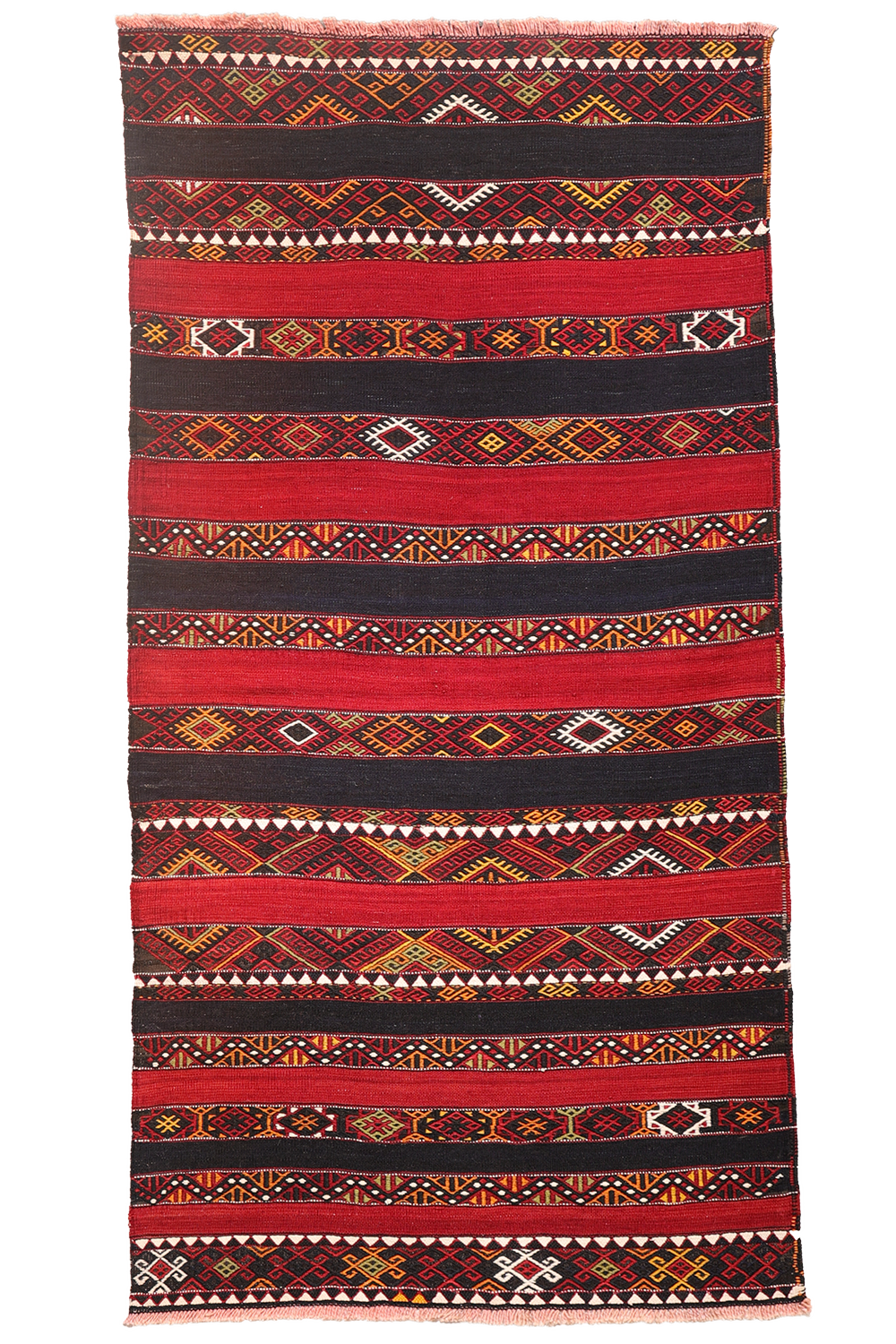750.00 €
Antique Sinanlı Kilim from Turkey – Natural Dyes, Kurdish Craftsmanship & Color Palette
This antique Sinanlı kilim is a superb example of Anatolian textile art, woven in the village of Sinanlı—part of the Haymana district in Ankara Province, Turkey. The village is home to the Kurdish Şêxbizin tribe, whose cultural identity is beautifully reflected in the kilim’s design and dark color palette.
Woven with natural dyes, the piece features the bold reds, crisp whites, and deep blues traditionally favored by Kurdish weavers. The white sections are skillfully woven using white cotton, adding both texture and contrast to the richly colored wool foundation.
Originally part of a longer kilim, this piece has been lovingly cared for over generations. Its intricate cicim embroidery remains in mint condition, and the elaborately decorated side cords highlight the attention to detail and pride of its maker. The wool used is of outstanding quality—strong, soft, and lustrous.
This is a heavy and sturdy kilim, ideally suited for high-traffic areas, offering both durability and timeless beauty. Clearly, this was a beloved piece, cherished by its original weaver—and now ready to be appreciated in a new home.
Material: 100% hand-spun sheep wool and cotton for the white
Size: 188×94 cms
Origin: Sinanli, Turkey
Date of weaving: 1930s
Kilims or Gilims are flatwoven textiles with a woollen weft on a woollen, goat hair or cotton warp. There are many different techniques and designs. The weaver normally works within a tradition of techniques, motifs and designs specific to a particular area or ethnic group. The designs relate to her natural surroundings, protection, fertility and the harmony of family relationships. Each weaver adds something from her own creativity and sense of composition. Kilims are often woven as part of a marriage dowry and can be used to create many different objects like storage bags, horse-blankets, baby carriers, blankets and wall and floor coverings.
This kilim was hand-woven on a simple loom by a village or nomadic weaver for her own use. Probably the weaver used wool from her own sheep. The wool was first cleaned, then hand-carded, hand-spun and finally dyed by hand, often using natural dye materials like roots, nuts, berries, fruits, flowers and plants. Kilims from the last quarter of the twentieth century mostly use synthetic dyes. This kilim would have taken many months to complete.
All our kilims selected in the country of origin and are professionally washed and restored before we import them directly from Iran, Turkey and Afghanistan. Natural patina and charming imperfections in design and colour (abrash) are highly valued characteristics of hand-woven kilims.
1 in stock
Additional information
| Weight | 3.1 kg |
|---|
Subscribe and receive the lastest news

